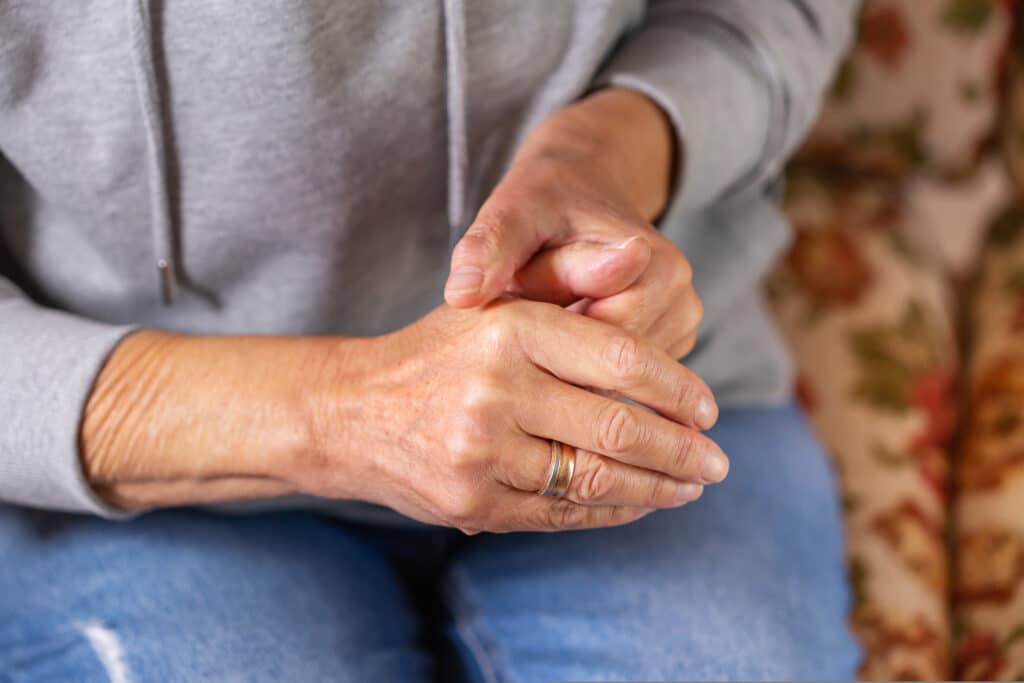
Thumb strains are a common yet frustrating injury that can significantly impact your daily life. Whether it’s due to repetitive motions, sports injuries, or accidental falls, a strained thumb can limit your ability to perform even the simplest tasks, such as gripping a pen, typing on a keyboard, or opening a jar. But why are thumb strains so hard to heal? In this blog post, we will explore the anatomy of the thumb, the challenges involved in the timeline of healing thumb strains, and how integrated care at CARESPACE can accelerate recovery and restore functionality.
Understanding Thumb Strains
The thumb is a remarkably complex structure, composed of multiple bones, joints, ligaments, tendons, and muscles. Its unique anatomy allows for a wide range of movements, including flexion, extension, abduction, adduction, and opposition. This versatility, however, comes at a cost: the thumb is particularly susceptible to strains and sprains.
A thumb strain occurs when the muscles and tendons that move the thumb are overstretched or torn. This can result from:
- Repetitive motions, such as texting or typing
- Sports activities, especially those involving catching, throwing, or gripping
- Direct trauma, such as a fall onto an outstretched hand
Why Thumb Strains Are Difficult to Heal
Several factors contribute to the prolonged healing process of thumb strains, also making the thumb strain hard to heal:
1. Constant Use: Unlike other body parts, it is nearly impossible to completely rest the thumb. Daily activities like writing, using a phone, or handling objects require thumb involvement, which can impede healing.
2. Complex Anatomy: The intricate structure of the thumb means that even minor injuries can affect multiple components, complicating the healing process. Damage to tendons, ligaments, or muscles can each require different treatment approaches.
3. Limited Blood Supply: Tendons and ligaments in the thumb have a relatively poor blood supply compared to muscles, leading to slower healing. This limited circulation can delay the delivery of essential nutrients and oxygen needed for tissue repair.
4. Movement and Stability: The thumb’s extensive range of motion and its role in gripping and pinching require a delicate balance between mobility and stability. Achieving this balance during recovery is challenging and can prolong the rehabilitation process.
5. Pain and Inflammation: Persistent pain and swelling can limit movement and function, creating a cycle of immobility that further hinders recovery. Managing these symptoms effectively is crucial for successful healing.
How CARESPACE Can Help
At CARESPACE, we understand the complexities of thumb strains and offer a comprehensive, multidisciplinary approach to treatment for thumb strains. Our team of physiotherapists, chiropractors, and other health professionals work together to create personalized, evidence-based plans of care that address the root causes of your injury and promote fast, effective, and long-lasting results.
The Role of Physiotherapy
Physiotherapists at CARESPACE play a vital role in the rehabilitation of thumb strains. They use a variety of techniques to reduce pain, improve mobility, and strengthen the affected area. Here’s how physiotherapy can help:
1. Manual Treatment: Hands-on techniques such as massage, joint mobilization, and stretching help to alleviate pain, reduce inflammation, and restore range of motion.
2. Exercise: Tailored exercise programs designed to strengthen the thumb and surrounding muscles can enhance stability and prevent future injuries. These exercises are gradually progressed to ensure safe and effective recovery.
3. Education and Ergonomics: Physiotherapists provide education on proper thumb mechanics and ergonomics to prevent re-injury. This may include advice on modifying daily activities and using supportive devices.
The Role of Chiropractic Care
Chiropractic doctors at CARESPACE complement physiotherapy by addressing any underlying issues in the musculoskeletal system that may contribute to thumb strain. Chiropractic care focuses on:
1. Spinal and Joint Adjustments: Restrictions in the spine or other joints can affect the function of the hand and thumb. Chiropractic adjustments help to restore proper alignment and improve overall biomechanics.
2. Soft Tissue Techniques: Chiropractors use various soft tissue techniques, such as myofascial release and trigger point therapy, to reduce muscle tension and improve flexibility.
3. Rehabilitation Exercises: In collaboration with physiotherapists, chiropractors design rehabilitation programs that include exercises to enhance coordination and strength in the thumb and hand.
4. Holistic Approach: Chiropractic care takes a holistic view of health, addressing lifestyle factors such as nutrition, stress management, and overall wellness that can influence recovery.
Coordinated Care for Optimal Results
One of the key advantages of seeking treatment at CARESPACE is the coordinated care approach. Our practitioners collaborate closely to ensure that all aspects of your condition are addressed comprehensively. This multidisciplinary strategy allows for seamless integration of physiotherapy and chiropractic care, leading to:
- Enhanced Communication: Regular team meetings and case discussions ensure that all practitioners are informed about your progress and can adjust treatment plans as needed.
- Individualized Care Plans: By combining the expertise of various health professionals, we can develop customized care plans that cater to your specific needs and goals.
- Faster Recovery: Integrated care accelerates the healing process by addressing multiple facets of your injury simultaneously, reducing recovery time and minimizing the risk of re-injury.
- Improved Outcomes: Coordinated efforts result in more effective treatment, leading to better functional outcomes and improved quality of life.
Thumb strains are challenging injuries that require a thoughtful and comprehensive approach to heal effectively. At CARESPACE, we leverage the combined expertise of our multidisciplinary team to provide you with the best possible care. By working together, our physiotherapists and chiropractors can help you overcome the limitations of a thumb strain, restore function, and get you back to your daily activities pain-free. If you’re struggling with a thumb strain, contact CARESPACE today to start your journey toward recovery.
Find practical advice on reducing pain and promoting healing in our thumb strains overview.




